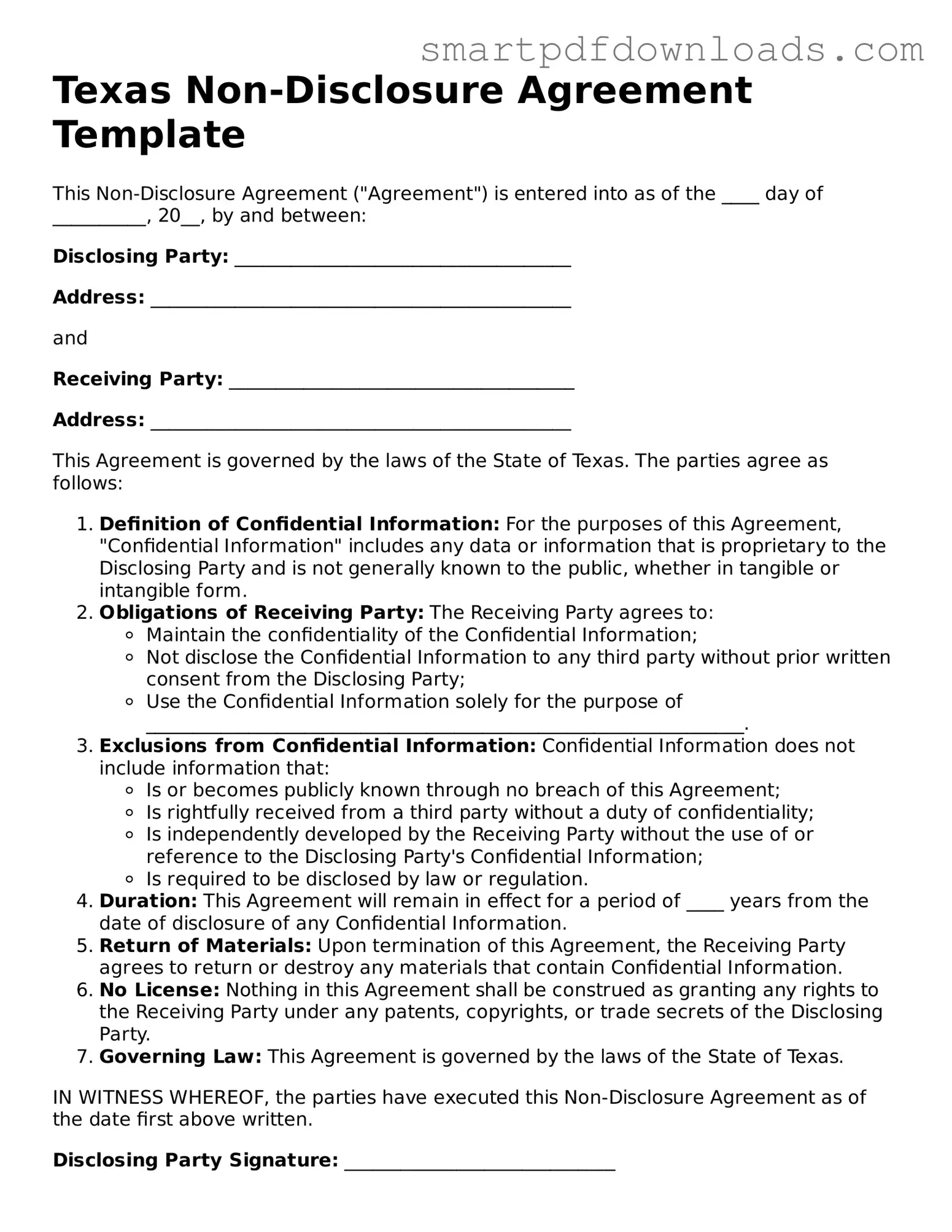Texas Non-Disclosure Agreement Template
This Non-Disclosure Agreement ("Agreement") is entered into as of the ____ day of __________, 20__, by and between:
Disclosing Party: ____________________________________
Address: _____________________________________________
and
Receiving Party: _____________________________________
Address: _____________________________________________
This Agreement is governed by the laws of the State of Texas. The parties agree as follows:
- Definition of Confidential Information: For the purposes of this Agreement, "Confidential Information" includes any data or information that is proprietary to the Disclosing Party and is not generally known to the public, whether in tangible or intangible form.
- Obligations of Receiving Party: The Receiving Party agrees to:
- Maintain the confidentiality of the Confidential Information;
- Not disclose the Confidential Information to any third party without prior written consent from the Disclosing Party;
- Use the Confidential Information solely for the purpose of ________________________________________________________________.
- Exclusions from Confidential Information: Confidential Information does not include information that:
- Is or becomes publicly known through no breach of this Agreement;
- Is rightfully received from a third party without a duty of confidentiality;
- Is independently developed by the Receiving Party without the use of or reference to the Disclosing Party's Confidential Information;
- Is required to be disclosed by law or regulation.
- Duration: This Agreement will remain in effect for a period of ____ years from the date of disclosure of any Confidential Information.
- Return of Materials: Upon termination of this Agreement, the Receiving Party agrees to return or destroy any materials that contain Confidential Information.
- No License: Nothing in this Agreement shall be construed as granting any rights to the Receiving Party under any patents, copyrights, or trade secrets of the Disclosing Party.
- Governing Law: This Agreement is governed by the laws of the State of Texas.
IN WITNESS WHEREOF, the parties have executed this Non-Disclosure Agreement as of the date first above written.
Disclosing Party Signature: _____________________________
Date: ________________________________________________
Receiving Party Signature: _____________________________
Date: ________________________________________________
